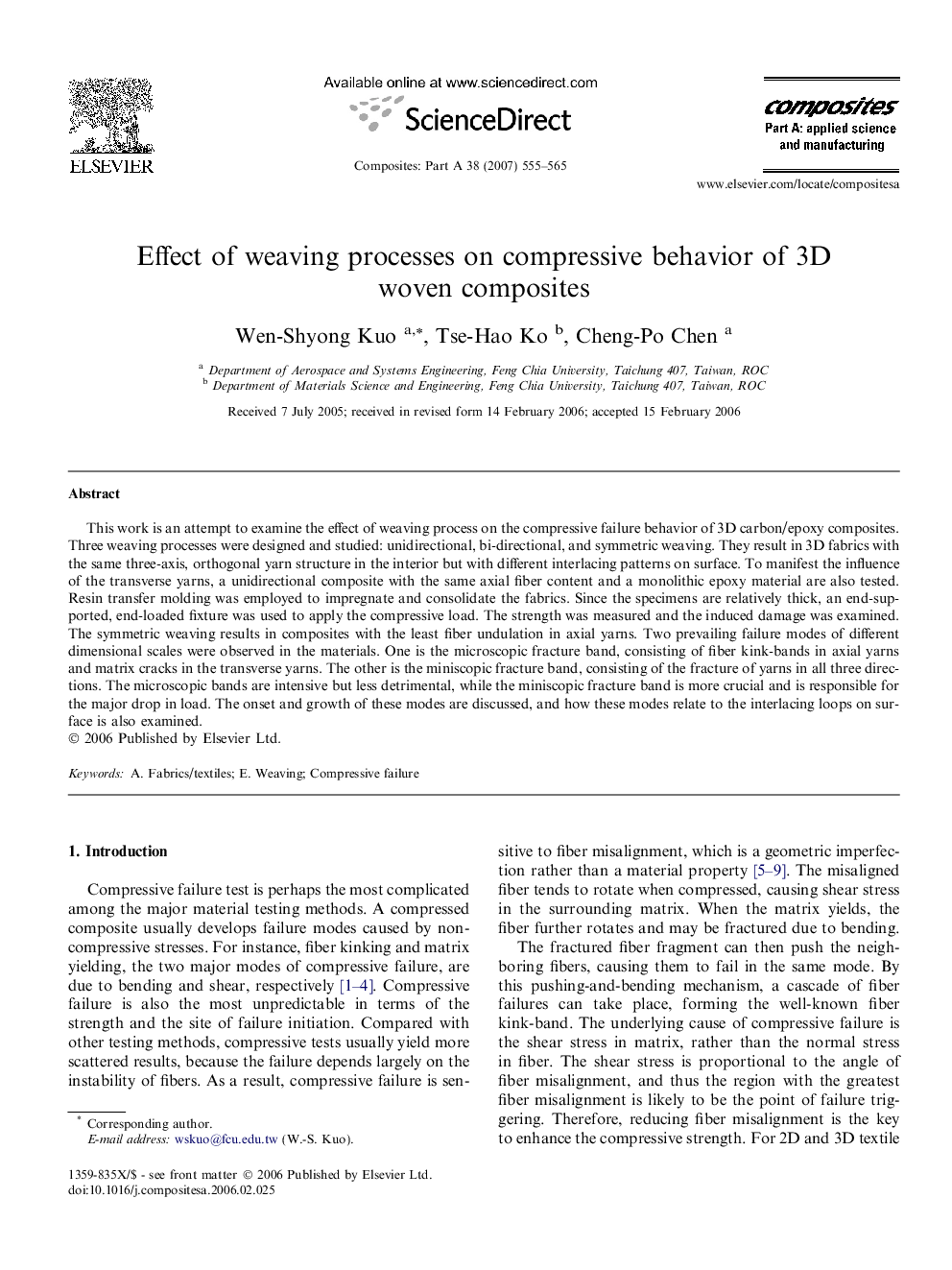| Article ID | Journal | Published Year | Pages | File Type |
|---|---|---|---|---|
| 1468164 | Composites Part A: Applied Science and Manufacturing | 2007 | 11 Pages |
This work is an attempt to examine the effect of weaving process on the compressive failure behavior of 3D carbon/epoxy composites. Three weaving processes were designed and studied: unidirectional, bi-directional, and symmetric weaving. They result in 3D fabrics with the same three-axis, orthogonal yarn structure in the interior but with different interlacing patterns on surface. To manifest the influence of the transverse yarns, a unidirectional composite with the same axial fiber content and a monolithic epoxy material are also tested. Resin transfer molding was employed to impregnate and consolidate the fabrics. Since the specimens are relatively thick, an end-supported, end-loaded fixture was used to apply the compressive load. The strength was measured and the induced damage was examined. The symmetric weaving results in composites with the least fiber undulation in axial yarns. Two prevailing failure modes of different dimensional scales were observed in the materials. One is the microscopic fracture band, consisting of fiber kink-bands in axial yarns and matrix cracks in the transverse yarns. The other is the miniscopic fracture band, consisting of the fracture of yarns in all three directions. The microscopic bands are intensive but less detrimental, while the miniscopic fracture band is more crucial and is responsible for the major drop in load. The onset and growth of these modes are discussed, and how these modes relate to the interlacing loops on surface is also examined.
